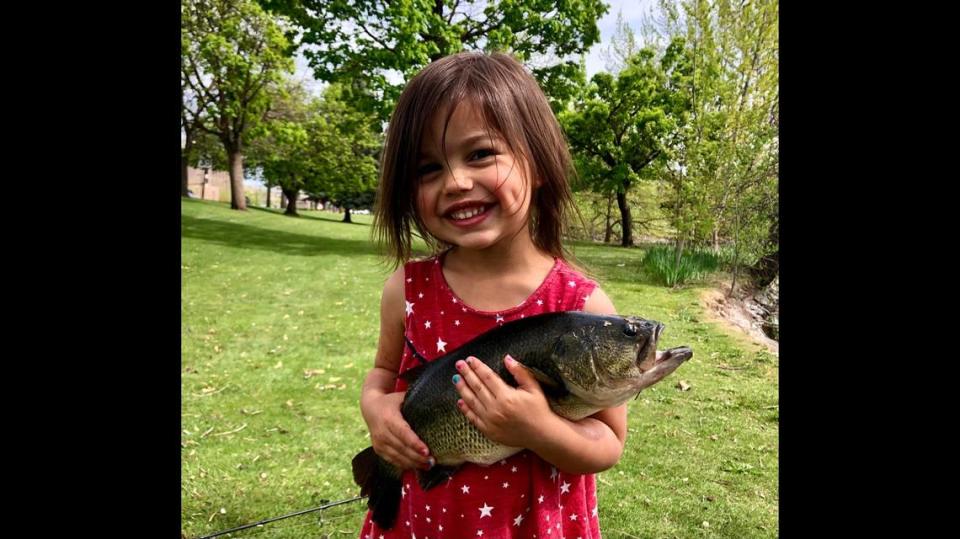Want a fishing trip without the drive? Try a local pond in the Treasure Valley!

I’ve said it before — we Idaho anglers are a spoiled bunch. Fishing options in our wonderful state are virtually unlimited, from wrestling with 100-pound sturgeon, to jigging for trout though frozen lakes, and pretty much everything in between. About the only thing missing is a coastline, and even that isn’t too far if you’re willing to make a drive.
But what if you’d like to stay closer to home? I’ll admit many of my favorite places to fish for bass, chase monster trout or harvest a stringer of panfish are an hour or two from town. But there are dozens of quality fishing holes with a much shorter commute — ponds!
Local ponds are often overlooked. Perhaps they seem too obvious, crowded or basic. But usually, my pond fishing experiences are none of the above. And now that my three-year-old fishing buddy, Quinn, has a brand-new baby sister, Skye, the convenience of a quick pond trip is hard to beat.
Want to do some pond fishing? Here are some basics and pointers to keep in mind.
Where to go
The Idaho Department of Fish and Game lists 24 ponds in the Southwest Region as Family Fishing Waters. The total number is considerably higher, especially if you count neighborhood ponds and other private waters that require permission to fish.
For anglers with young kids, I recommend ponds within city parks (Simplot, Kleiner, Settlers and McDevitt, to name a few). These urban fisheries provide easy access, multiple species to fish for and the added bonus of nearby playground equipment. If the fish aren’t biting, the swings are always a hit!
For more serious anglers, places like Sawyer’s Pond and Wilson Springs provide room to explore in a rural setting — and they are home to some lunker fish, especially bass.
What you’ll catch
Speaking of bass, largemouth are a staple in most ponds. Interestingly, these fish aren’t stocked by Fish and Game — they are naturally sustaining populations that have been around for years. The same goes for bluegill, crappie and pumpkinseed. The main hatchery imports are rainbow trout, which are stocked by the hundreds during spring and fall. These sterile fish provide ample catch and harvest opportunities for anglers.
Fish and Game also transplants large catfish from the Snake River into local ponds. Carp round out the species list. Often seen but seldom caught, these giants occasionally eat a worm or piece of bread.
What to use
My go-to strategy at a pond is a double-pronged attack utilizing my two-pole permit. On one rod, I use a worm and marshmallow on a slip-sinker. This is a deadly presentation for stocked trout, and it will occasionally catch other species, too. The bait rig goes in a rod holder with the anti-reverse switch engaged, freeing up my hands to actively fish a second rod.
If trout are the target, I throw a Panther Martin spinner or Rapala jerk bait. For bass, I like spinnerbaits, jigs or a Texas-rigged plastic worm. And for panfish, I usually throw a micro jig fished a couple feet under a small bobber, adding a Power Bait nibble or a small chunk of worm for flavor.
What to expect
Ponds usually aren’t overcrowded, but you’ll likely encounter other anglers. If you have small dogs or little kids, look out for angry geese — they are especially ornery in the spring.
Given the small size and decent water clarity of many ponds, I like to walk the bank until I see fishy activity like surface feeding, bass hiding in the rushes or schools of panfish patrolling the weed beds. I find most ponds are best in spring, before the summer weeds get out of control. Now is the perfect time, with plenty of stocked trout swimming around and warmwater species actively on the hunt. Go get them! Tight lines!
Jordan Rodriguez has been fishing Idaho waters since he was a teen. Share your fish stories, adventures, tips and tricks with him at tightlinesboise@gmail.com or visit www.tightlines208.com.

 Yahoo Movies
Yahoo Movies 